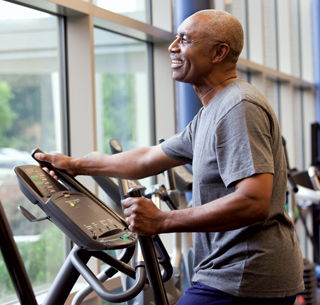
Exercise or physical therapy, but not necessarily vitamin D, can help prevent falls in older adults, according to new recommendations issued Tuesday by the U.S. Preventive Services Task Force.
The recommendations are written for primary care physicians, including geriatricians, who care for adults who are aged at least 65 years and are living at home, but USPSTF Vice Chair Alex Krist, M.D., M.P.H., told McKnight’s Senior Living, “The task force encourages anyone who regularly works with older adults to familiarize themselves with these recommendations to better understand how primary care clinicians can support preventive activities like exercise — and thus play a role in the prevention of falls and fractures.”
The recommendations are based on evidence reviewed by the task force and update earlier ones. They say that exercise, such as supervised individual and group classes, can help prevent falls among adults who are at increased risk. Nutrition therapy, medication management and other interventions that target issues with balance, gait, vision, blood pressure and additional factors also may benefit some people, according to the independent, volunteer panel of national experts.
The task force has changed its stance on the use of vitamin D for falls prevention, however, no longer recommending it.
Nor does the body recommend vitamin D or calcium to prevent fractures in those who do not have a history of fractures related to osteoporosis.
Current evidence suggests that lower doses of vitamin D and calcium (400 IU or less and 1,000 mg or less, respectively) do not prevent fractures in postmenopausal women, and the evidence is not clear regarding higher doses, the task force said. Not enough evidence exists to recommend for or against any dose of vitamin D and calcium supplementation, alone or combined, to prevent fractures in men or in women who have not gone through menopause, the group said.
The recommendations have been published online by JAMA as well as on the task force website.



